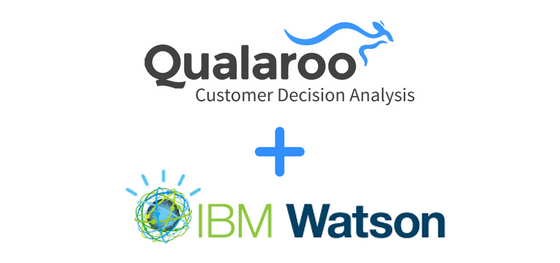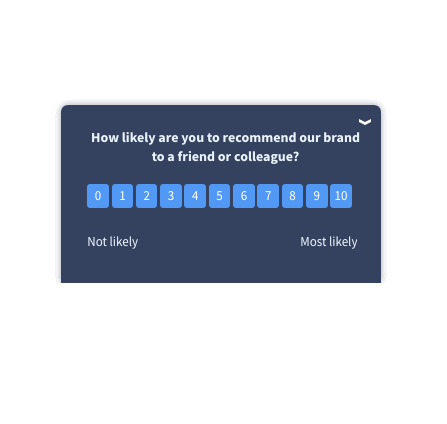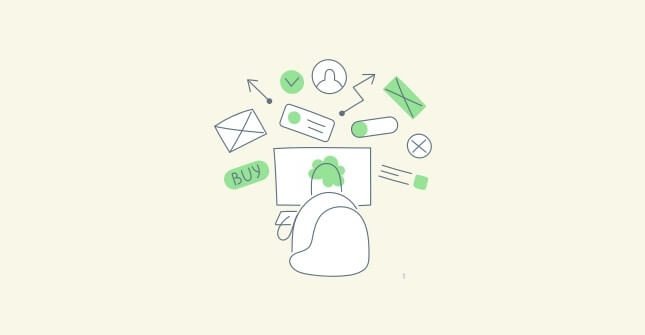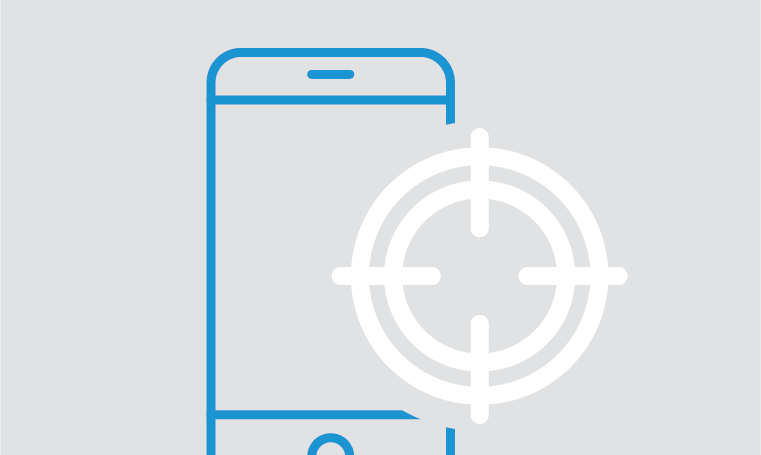Did you know that 86% of buyers are willing to pay more for a great customer experience?” This statistic really highlights the importance of accurately measuring customer satisfaction (CSAT).
However, CSAT surveys often have complicated questions that confuse customers, leading to unreliable feedback. To improve results, I believe it’s essential to ask clear, straightforward questions and provide simple answer choices. This not only reduces skipped questions but also enhances the quality of responses.
With customers more engaged than ever, social media—like Facebook, Instagram, Twitter, and TikTok—amplifies their voices. I’ve seen how a single comment can influence many potential buyers and linger in the digital space for years.
Understanding how to measure customer satisfaction effectively is crucial. Keep reading for more examples and insights!
Why is Measuring Customer Satisfaction Essential in 2025?
To understand how crucial customer satisfaction measurement is you need to have a look at the exact benefits the process offers. When it comes to measuring customer satisfaction in 2025 there are several factors at play to give your business the boost it needs, as the points below evident show.
1. Unsatisfied Customers Incur Direct and Indirect Costs
Customer/user satisfaction isn’t something only customers look forward to but plays a vital role in the success of a business. One dissatisfied customer can make a significant financial dent in a business, and when the number of dissatisfied customers increases, a business’s worst nightmare comes true.
Customer dissatisfaction incurs both direct and indirect costs for business, which is a less than ideal situation, no matter how you look at it. Direct costs mean unsatisfied customers will not continue to do business with you, affecting your sales and profits.
Here, not only did you lose your customer, but you lost them to your competitors, which would then result in indirect costs.
Additionally, the resources you spent in acquiring those customers without making it worth the expenses would obviously be a waste of resources.
So naturally, tracking your user satisfaction is not only smart but a proactive move to catch the about-to-churn customers and make them stay. This way, you can also explore the source of customer dissatisfaction and reallocate your resources and change the strategies accordingly.
2. Satisfied Customers Bring Repeat Business
As a satisfied customer, you would interact with a company again and purchase its services, wouldn’t you? Happy customers tend to give repeat business to companies as long as they have a great time and need the services/products offered.
So, you can immediately understand how connected and dependent a business’ success is on its happy and satisfied customers.
3. Bad Experience Impacts Your Brand Image
It’s as important to know about bad customer experiences as the good ones when learning how to measure customer satisfaction.
An unpleasant experience leaves a bad taste in the customer’s mouth, and when that happens, bad word of mouth starts to spread. It tarnishes the brand reputation that you’ve worked so hard to develop throughout the years.
Online bad word of mouth is even more fatal and detrimental for a business as the word spreads there like a wildfire.
A few bad reviews on social media are enough to influence many of your potential customers who would now do business with you since they have prejudices against your brand.
So, instead of minimizing the damage later, why not prevent it entirely? That’s where tracking customer satisfaction helps.
For example, Amazon once charged almost $7000 for an order of toilet paper rolls of $88. The customer kept reaching out to customer support but was denied the refund since the company believed the parcel was delivered safely and without damage.
The customer wasn’t heard until after they reached out to a local news channel that shared their story. After long and tumultuous 2 months, Amazon refunded the money wrongly charged.
Instances like this make a big dent in any company’s reputation and also influences potential customers’ view toward your company.
4. Tracking CS Improves Customer Experience
Many factors can contribute to making a customer unsatisfied and unhappy such as they received a faulty product, running into a problem with your software, having an unpleasant interaction with your customer support representative, and many more.
When you continuously measure client satisfaction, it becomes easy to identify these problems early and improve the user experience before customers decide to give up on your brand.
Also, you can examine if the customer retention strategies you implemented to enhance the customer experience are working or not. This way, you can review the whole process again and redesign the strategy if there are no major improvements.
For example, if your customers are not satisfied with the checkout process, you can collect their in-context feedback and make improvements to resolve their issues.
But, if your cart abandonment rate is still high, then you need to revise your strategy and find out the root cause of the problem. For instance, maybe customers are not satisfied with the payment gateway options, so you will have to work on that.
5. Competition Differentiator
In markets as savage as today’s time, every business is out there killing their marketing game, trying to top sales with innovative ideas & products, and improving their customer experience.
Besides everything we mentioned above, one crucial factor can help your business stand out among the competition – customer satisfaction.
Satisfied customers, as we discussed above, bring repeat business. They are also more loyal to your brand than the new or unsatisfied customers.
You wouldn’t have to worry about your competitors if you play your cards right and create satisfying customer experiences. Because if they are satisfied, they will not leave your business.
6. Reduces Churn
More often than not, when we hear customer churn, we generally think the price to be a significant factor, whereas it’s not.
Many brands offer products/services for higher prices than the standard for a niche but still have a vast and loyal customer base. Customers are willing to pay for quality, which includes not only the product itself but also well-crafted photos, relevant descriptions, and high-quality support. Creating engaging content does take time and effort, especially when it comes to ensuring consistency across multiple platforms. However, even with just an iPhone, you can effectively manage this process. For a comprehensive list of the photo editing apps for iPhone, you can enhance your content creation with ease.
Think about it; if your offerings are high-quality, user experience is A-one, and customer service is nothing but delightful and responsive, why would customers leave?
No matter how low your prices are, if your customers are unhappy with their experience with
your brand, they are likely to give their business to your competitors.
Related Read: How to reduce churn in saas using customer feedback
How to Improve Customer Satisfaction?
Before you even start collecting customer feedback, we believe it’s essential to know the best practices in measuring customer satisfaction. It will help you develop strategies to remove customer bottlenecks that impede user satisfaction.
Customer Feedback Plays a Vital Role in Customer Satisfaction
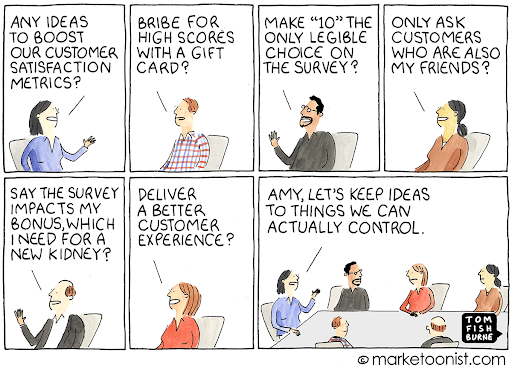
We often digress into different directions instead of focusing on what matters the most – Customer experience and feedback.
One thing to know about customers is if you don’t ask for their feedback, they won’t give it and instead leave your business if they have some issues. But you can’t just bombard them with long-form surveys.
So, what can you do?
For one thing, you can place pop-up surveys on the popular parts of your website/app or some other relevant place where you want to gather in-context feedback.
For example, you can place exit-intent surveys right when a visitor is about to exit the website, asking them why they are leaving.
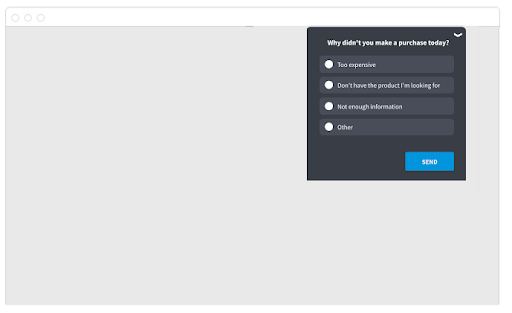
{Also check out: 10 Best Exit-Intent Pop-Up Tools to Increase Customer Retention}
This way, not only are you asking at the right time but the right thing, which will give you insights that you can use to find solutions.
Here are a few examples of exit-intent survey questions:
- What Would’ve convinced you to complete the purchase of the item(s) in your cart?
- What was your biggest fear or concern about purchasing from us?
- If you did not make a purchase today, can you tell us why not?
- Is our pricing clear?
- What could we do to make this site more useful?
- Is there anything on this site that doesn’t work the way you expected it to?
- What’s preventing you from starting a trial?
- What prevented you from doing what you came to the site to do?
For instance, if they say they can’t find a particular product, you can use branching logic (as shown in the image below) to lead them to the specific product page and stop the churn.

Feedback not only helps identify your weak spots but allows you to fix the issues and offer a seamless customer experience that guarantees satisfaction.
What’s important to remember is that collecting feedback is half the job done; the other half is ensuring you actively work on it to resolve issues and customer pain points. Only then will you be able to achieve high customer/client satisfaction?
Related Read: How to Use Customer Feedback for Product Growth
Shift from Business-Centric to a Customer-Centric Approach
If you want to offer a customer experience that has a lasting impression and leaves your customers wanting more, you need to shift from a business-centric view to a customer-centric approach.
It means that every business decision you make has to reflect consideration for your customers and not just business. You need to prioritize customers while making decisions and benefit your customers.
Remember, happy customers, give repeat business, promote your brand online and offline through recommendations, & referrals, and will be with you for the long haul.
Listen and Monitor Feedback Across All Channels
Indeed, customers won’t give you feedback if you don’t ask for it, but there is one place where you can have honest and authentic customer views and experiences – Online.
Social media has become one of the popular places for word-of-mouth marketing. Customers share the stories of their experiences with a brand, the issues they faced, and how effectively the company handled them. If you want to learn how to measure customer satisfaction, this is where you begin.
If your customers are disappointed in your brand, you will know about it — along with a thousand other people.
You can certainly use this organic feedback to your advantage by monitoring it. Keep tracking comments on your social media posts, posts you get tagged in, and in what context people review your products/services.
You will get a general idea of your brand image to your customers and what areas you need to work on.
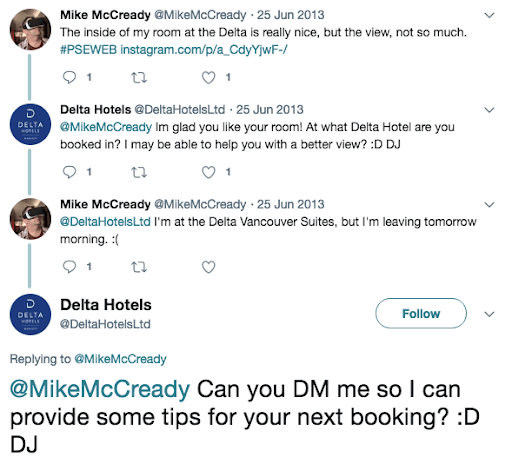
Measure Customer Satisfaction at Regular Intervals
You can use Customer Satisfaction Surveys (CSAT) to ask customers if they are satisfied with products/services and the overall experience.
Using a survey feedback and analysis tool like Qualaroo, you can schedule the surveys and automate the whole process. You can also see analytics and reports from the data to drive actionable insights. Try to measure customer satisfaction every 90 days during the customer lifecycle; no more no less.
If you measure CSAT too often, then you run the risk of annoying customers, and also the results you will get won’t be accurate.
Methods of Collecting Customer Feedback
Here are some tried and tested ways to measure customer satisfaction and help you improve the overall experience.
Online Surveys
User interface integration is a crucial design consideration for building good in-app questions. With a good customer experience tool, you can add surveys to your websites and mobile apps to collect customer/user feedback through customer satisfaction surveys.
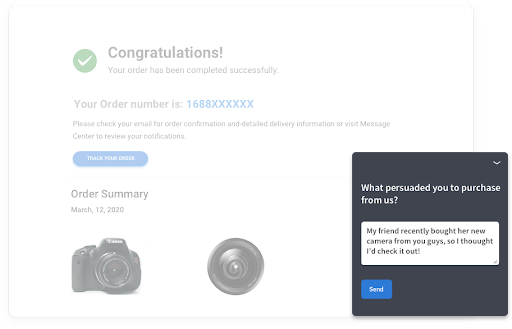
They will collect the right customer insights and help increase your web and mobile app conversion rate.
As for the on-site surveys, you can place simple feedback surveys strategically on different pages of your website or link to specific elements to get triggered and map how satisfied a customer is with the entire experience.
Related Read: 25 Best Online Survey Software
Email Surveys
Email surveys are a tried and tested way of following up on every lead via email. The customers who take the time and effort to respond are usually honest, so the feedback is invaluable.
Additionally, email surveys allow customers to answer the survey as per their accord. So, it’s a great way to conduct long-form surveys. Once you have the responses, it becomes easy to procure valuable insights and work on them to increase customer satisfaction.
Social Media Metrics and Web Analytics
Your digital assets such as your website, app, and social media platforms are a great source of direct and indirect feedback. For example, comments under your posts and brand mentions on social media are essential metrics you should analyze.
Customers leave their feedback and experience stories in the comments as unfiltered and authentic feedback. Similarly, you should analyze website analytics such as pages that have bounce rate, low bounce rate, level of traffic, and so on.
Such insights offer a deep look into customers and bring forth deep-rooted problems through behavior patterns. Once you know what the data means, it’ll become easier to resolve those issues and improve customer satisfaction.
Live Chat
Another effective way to collect authentic customer feedback is customer chat software Your customers connect with your brand through live chat to resolve their issues. You can analyze the chats with customers to record the recurring problems and find a permanent solution.
You can also conduct surveys in your live chat sessions to ask customers about their satisfaction with the customer representative and chat support.
Web Intercept Surveys
Web intercept surveys pop up on a website and are shown to random visitors to get the most genuine and accurate feedback. It’s a great way to collect feedback since it is non-intrusive and allows customers to participate in the survey.
8 Simple Steps to Measure Customer Satisfaction
Now, let’s find the answer to “How to measure customers’ satisfaction?”
To do that, follow these eight simple steps on measurement of customer satisfaction, and you’ll be able to apply the insights to improve customer experience.
1. Define Your Goals
Before collecting customer feedback and using it to improve customer satisfaction, there is one crucial thing you need to consider – what do you want to do with the feedback?
You should clarify your goal for collecting the feedback and achieving higher customer satisfaction using it. Also, you need to evaluate the value of your feedback against the cost of collecting it.
Once you have a goal and know what to do with the data, you must make changes and resolve customer issues.
2. Prepare an Outline
With your goals in place, you can focus on preparing an outline of your action plan. Before collecting the feedback, you need to be clear on how the feedback will flow in your company and how you will use the data.
Some examples of what you can consider while preparing a plan are:
- Improving the quality of customer support interactions with unhappy customers.
- Look into the customers’ bottlenecks and effectively remove them to enrich their experience.
- Prepare thought-out live chat scripts targeted to address newly identified customer issues.
- Include knowledge base as proactive support so your customers are more equipped to resolve their queries and issues.
- Plan actions based on insights from segmented customers such as promoters and detractors identified by NPS surveys.
For example, suppose you have data from your Net Promoter Score survey. You can use the insights about your promoters to keep them loyal to your business by enriching their experience.
You can use the in-context feedback from your detractors to ensure you resolve all the issues that forced them to detract and stop this chain of bad customer experience from spreading further.
CASE STUDY: GRAPHICSPRINGS
GraphicSprings is an easy-to-use logo creator tool and the people behind it wanted to increase its revenue and improve the conversion rate.
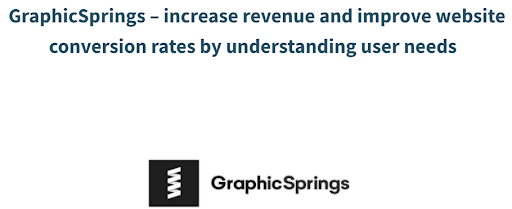
In order to understand why customers were leaving the website and also abandoning their shopping cast, it implemented exit-intent and UX surveys.
The company was able to collect customer feedback in real-time and implemented counteractive changes to the website as per the feedback before running A/B tests.
Within a week, the company saw a 4% improvement in cart abandonment rate and gradually improved its revenue by 10%.
You can check out this case study to understand in detail how GraphicSprings reaped the benefits of customer feedback.
Related Read: 30 Best Website Feedback Software
3. Choose a Type of Customer Satisfaction Survey Metric
We only briefly mentioned using customer metrics to collect feedback on the above point, but now we will discuss it in detail.
Customer Satisfaction Score Survey
It is one of the well-defined methods for measuring customer satisfaction. The most common question in a CSAT survey goes like this:
“How would you rate your overall satisfaction with our product?”
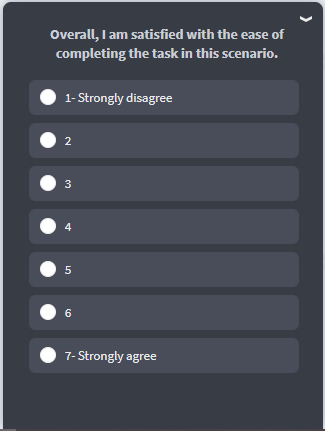
How to Calculate CSAT Score?
The responses are graded from very unsatisfactory through neutral to very satisfactory. CSAT surveys are basic and straightforward so that customers can respond quickly. Simply divide the positive responses by the total responses and multiply the resulting number by 100. It gives you the CSAT percent.
Let’s say that out of a total of 70 responses in your CSAT survey, you got 42 positive responses, then your CSAT would be 60%.
42 / 70 x 100 = 60%
How to use the CSAT survey?
The simple CSAT survey works best when you have just changed your business processes and want to know its impact and how it compares to the previous way you were doing things. There are many different ways to get the information you need from your customers.
Check out this handy list of questions to ask:
- Did this page meet your expectations?
- Was there anything about this checkout process that we should improve?
- How would you rate your overall experience on our site today?
- How would you rate our service on a customer satisfaction scale of 1 – 10?
- What could we have done better?
Customer Effort Score Surveys
When customers have completed a process, gauging how difficult or easy they found it should guide your decision about improving the process so that you can improve the level of customer satisfaction. It is where the Customer Effort Score (CES) survey comes in handy.
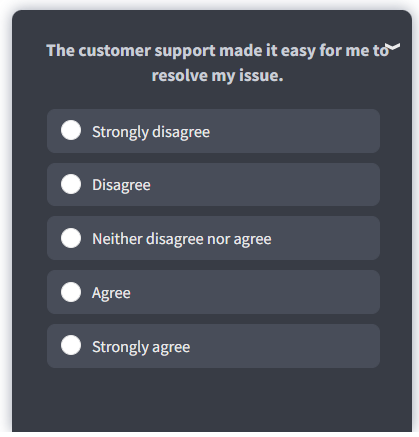
If customers find getting their issue resolved exhausting (for example, completing a purchase or using their promo code during checkout), you need to simplify the process.
The easier it is for customers to get what they want, the more likely they are to give you repeat business.
To gather customer feedback that helps you improve your services further, consider asking these questions:
- What’s preventing you from signing up?
- Was there anything about this checkout process that we should improve?
- Is there anything preventing you from completing your purchase?
- What could we do to make this site more helpful?
- Was this help section useful?
- Were you able to find the information you were looking for?
Net Promoter Score Surveys
Net Promoter Score or NPS is the simplest way to measure CSAT. This score indicates satisfaction and goes a step ahead to indicate how loyal a customer is.
It gives customers a numbered scale from 1 (not at all likely) to 10 (extremely likely) for measuring how likely they are to speak positively about your brand, service, or business. The typical (trademarked) NPS question is:
“On a scale of 0 to 10, how likely are you to recommend our product/service to a friend?”
How to Calculate Net Promoter Score?
The respondents are grouped into three segments:
Detractors (choosing 6 or lower)
Neutrals (choosing 7 or 8)
Promoters (choosing 9 or 10)
Subtract the number of detractors from the number of promoters (neutrals don’t count in this calculation) to get your NPS percentage. As with most CSAT metrics, the higher your NPS, the better your brand’s image!
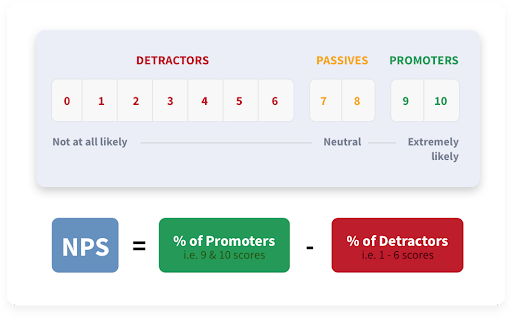
NPS remains a prevalent metric to convert neutrals into promoters and detractors into neutrals – or even promoters of your brand.
Related Read: 11 Best Net Promoter Score Software
How to Use NPS Survey?
Send them at regular intervals; for example, target the milestones in a customer’s journey or schedule it at random so that any specific interaction with your company does not result in a biased response.
Also, remember to send it to different sets of customers to get a good overall idea.
Here are the different customer segments you can target:
- Ask trial users whether they would like to recommend it after the trial period ends
- Ask first-time customers about their experience
- Ask regular customers on a random basis or as per a milestone (say after one year or after an upgrade)
- Ask customers who downgrade or stop using your product
- Other Surveys: Email and in-App
Besides the on-site surveys, you can conduct CES, NPS, and CSAT surveys in your mobile app or by sharing a link through email.
A feature-rich feedback tool will allow you to conduct surveys on-site, in-app, in prototypes, and by email. This way, you can reach out to all your customers on different platforms and collect authentic feedback.
You can refer to this list of questions you can ask while conducting online surveys.
Here are a few examples:
- “Which other options did you consider before choosing our [Product name]?”
- “Which of our competitors, both online and offline, did you consider before choosing our [Product name]?”
- “What topics would you like to see us write about next?”
- “What other products would you like to see us offer?”
Additionally, there is no hard and fast rule to conduct only one type of survey, such as NPS or CES; you can conduct multiple surveys at a time. If you monitor more than one metric, you can use the combined insights and scores to get a complete picture of how things are.
For example, you can identify the detractors and check their CSAT scores through your NPS survey.
If the score is negative, you need to collect in-context insights from them, resolve their issues, and if you can’t, then at least you can work on the issue to avoid it from happening in the future.
Such a combination of different customer satisfaction metrics will help you keep track of your promoters & detractors and keep the churn rate under control.
4. Customize Survey Questions
Besides the metrics discussed above, you can conduct other survey types, such as long-form surveys customized to your goals. For example, you can create a long email survey with demographic questions to collect customer insight.
One thing you should consider before conducting long-form surveys is that short surveys have a higher completion rate.
So, consider your business needs and conduct long surveys if you require detailed customer insights and have a goal in mind about how you want to use the data.
If you want holistic customer feedback, we suggest focusing on qualitative data and quantitative data. Prepare a survey with qualitative and quantitative questions to get the statistics and their reasons.
Bonus read: Qualitative vs. Quantitative Research: How to Get the Best of Both Worlds
While creating long surveys, it’s easy to get lost among all the questions you want to ask, and you may deter from the questions you should be asking. So, do ensure to ask only the relevant questions.
This way, you won’t waste your customers’ time asking the wrong questions, and you won’t end up with the data you don’t want.
Now, to motivate customers to take your long surveys, you can offer discounts, coupons, gift cards, and other types of incentives.
5. Customize Survey Triggers Accordingly
Once you have created a survey, the next natural step is to publish it and set the triggers. This lets you control who views the survey and when. You can refer to your outline and end goal when setting the triggers.
Setting up triggers ensures that you survey the right people at the right time and the right place. A good survey tool allows you to set triggers based on visitor behavior, referring domain, search engine source, browser, device, geographic location, and much more.
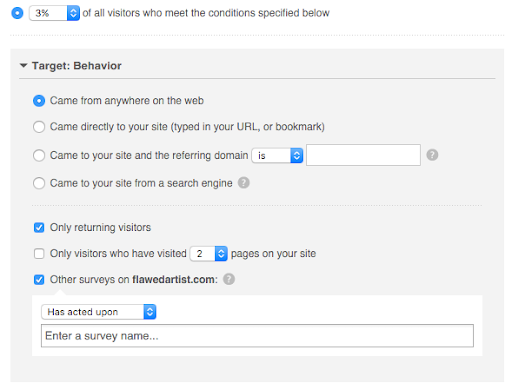
You can set targeting based on how many seconds later your pop-up survey appears once a visitor lands on your website, when a user completes onboarding, when a visitor is about to leave the website, and so on. While setting triggers, you can also establish when the survey will start and end.
Pro Tip:
As the VP of Customer Success at Rainforest QA, Nils Vinji, says, “The best time to trigger/send a customer satisfaction survey is after a meaningful part of the customer lifecycle is completed.”
Here are a few tips you should keep in mind while setting survey triggers:
- Set up a survey closer to the experience.
- Do not wait long to show the survey since customers tend to forget their experiences if you wait too long.
- Use screening questions to filter out unsuitable respondents and survey only the niche customers you want the insights on.
- Survey customers more than once. For instance, if you tracked customers’ NPS recently, wait for a couple of months and then survey the same customers again to see if you’ve improved customer satisfaction or not.
- Always add follow-up questions to MCQ-type surveys to gather in-context insights.
Related Read: How to Write Good Customer Survey Questions
6. Chose Survey Medium
For all the survey types and metrics we discussed above, i.e., NPS, CES, on-site, in-app, pop-ups, and long-form surveys, you need to find a tool that offers you all the survey types.
For this, you don’t have to try multiple feedback tools, just one that can do it all. You need a customer insight tool that allows you to create surveys from scratch or templates, publish them on different platforms like websites, mobile apps, prototypes or send via emails.
For this, you can choose a tool like Qualaroo survey feedback. It comes with advanced targeting and reporting that includes Sentiment Analysis, which will help you examine open-ended responses and dive deep into your customers.
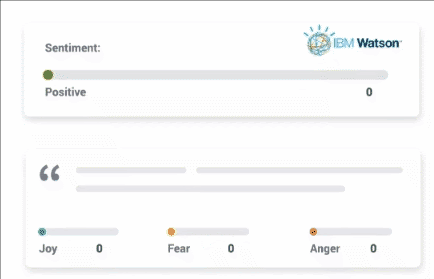
7. Examine the Collected Survey Data
You have invaluable customer feedback, and all there is left to do now is to drive actionable insights from the data analysis. Many survey tools come with in-built analytics that pulls responses from the surveys and prepares readable reports.
You also need to track the social media metrics and web analytics since a lot of customer behavior data comes from how users interact with your website and social media handles. A tool such as Google Analytics is your best bet.
8. Use the Insights to Do the Right Thing
All of your efforts till now have come to this. Now that you have actionable insights, the question is – what will be your strategy to apply those insights to resolve customer bottlenecks?
For example, suppose you conducted an NPS survey and found out that the percentage of detractors is more than that of promoters. Using follow-up questions, you asked the detractors the reason behind their rating and found multiple issues throughout the customer journey.
Now that you know what you need to improve, you can strategize accordingly to make the experience better and enhance customer satisfaction.
As another example, suppose you have more promoters than detractors. You can’t treat your loyal customers as passive customers.
So, to ensure they are happy and loyal to your company, you can create loyalty programs to increase engagement and enhance their overall experience to the extent that they become brand advocates who bring in more customers
FREE. All Features. FOREVER!
Try our Forever FREE account with all premium features!
The End Goal: Improving Customer Satisfaction
Indirect feedback needs to be analyzed, as does direct feedback if something valuable needs to be made of them. How you collect customer feedback, directly or indirectly, affects their usability.
You can ask questions like “how can we improve our product” to collect free-form answers. Then, you need to assess these answers for any underlying intent to figure out what the majority feels is missing from your product.
Since improvement is an iterative process, going through the processes to increase CSAT with every round of changes (no matter big or small) is essential to measure the effect of every change on CSAT.
The right questions need to be asked to the right customer at the right time to gauge customer satisfaction accurately. Qualaroo’s Nudges™ lets you set this with custom properties to target specific visitors who meet certain criteria as mentioned below:
Who The Visitor Is
Target options have multiple factors for deciding whether to serve the survey question to all people who visit the page or to certain types of visitors based on their behavior, the type of browser they use, and their geographic location.
When The Time Is Right
Choose when the survey question shows up. It can be at the arrival of a visitor, or when they are halfway down the page, when they show exit intent, or after spending a predefined amount of time on the page.
Frequency Of Survey Question
Set the time between repeating the survey question, just showing it once to the visitor, or insisting on a response from the visitor. However, you should exercise this last option carefully.
While collecting customer feedback, customers should not feel pressured to respond, or they might abandon your business altogether. That is why Nudges™ are designed to be unobtrusive to the user, with gentle prompts that do not divert from the user experience and make the customer feel valued.
Get Started with Measuring Customer Satisfaction
Measuring customer satisfaction through feedback surveys is both an art and a science. It helps you see how customers respond to your offer in real time. With solid analytics backing these surveys, you can predict what might turn a customer into a loyal fan of your brand, allowing you to tackle customer satisfaction effectively.
Now that you know how to measure customer satisfaction and improve the customer experience, it’s time to find a tool that can help you gather feedback, track important metrics, and provide valuable insights. Tools like Qualaroo can be particularly effective, offering easy ways to collect customer opinions.
Once you find the right tool, you can put these ideas into action and start seeing positive results. Take this chance to better understand your customers and strengthen your connection with them!
FREE. All Features. FOREVER!
Try our Forever FREE account with all premium features!


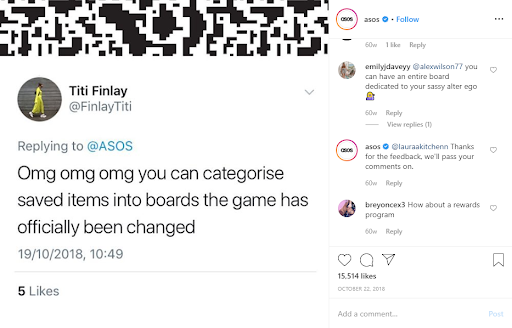
 We'd love your feedback!
We'd love your feedback! Thanks for your feedback!
Thanks for your feedback!


